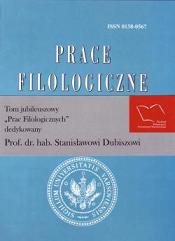<Bardzo> podobne, a jednak inne. Z historii polskich wykładników intensywności cechy
<Bardzo> Similar, but Different. From the History of Polish Indicators of Quality Intensity
Author(s): Krystyna KleszczowaSubject(s): Language and Literature Studies
Published by: Wydział Polonistyki Uniwersytetu Warszawskiego
Keywords: historia języka polskiego; semantyka; wykładniki intensywności cechy; history of the Polish language; semantics; expressing the degree of intensity
Summary/Abstract: In the whole history of the Polish language the lexeme bardzo ‘very’ was the most frequently used indicator of quality intensity. We may have an impression that it is a stable language component. However, a closer analysis of historical material shows different meanings, different behaviour in combination with other lexemes, and also a different location in the whole class of gradation adverbs. The study of polysemy, etymology and meaning shifts of these adverbs indicates that gradation is located in the semantic space specified by categories such as: SIZE, NUMBER, INTENSITY. The basic meaning of the intensifying adverb bardzo was not ‘fast’, as it is suggested in etymology dictionaries, but ‘vehemently, with great force’. In principle, each adverb that takes on such meaning can function as an indicator of gradation.
Journal: Prace Filologiczne
- Issue Year: 2007
- Issue No: 53
- Page Range: 315-322
- Page Count: 8
- Language: Polish

